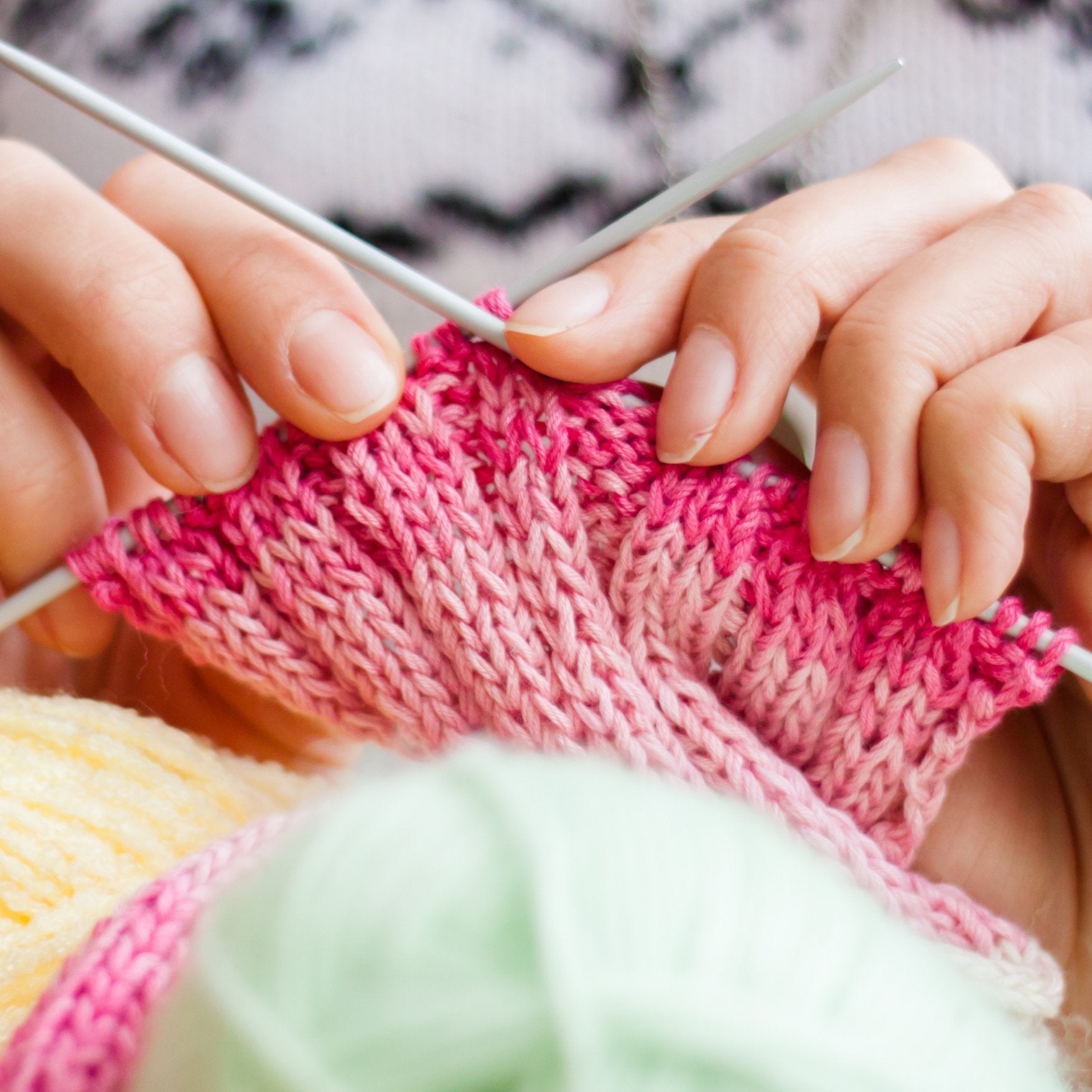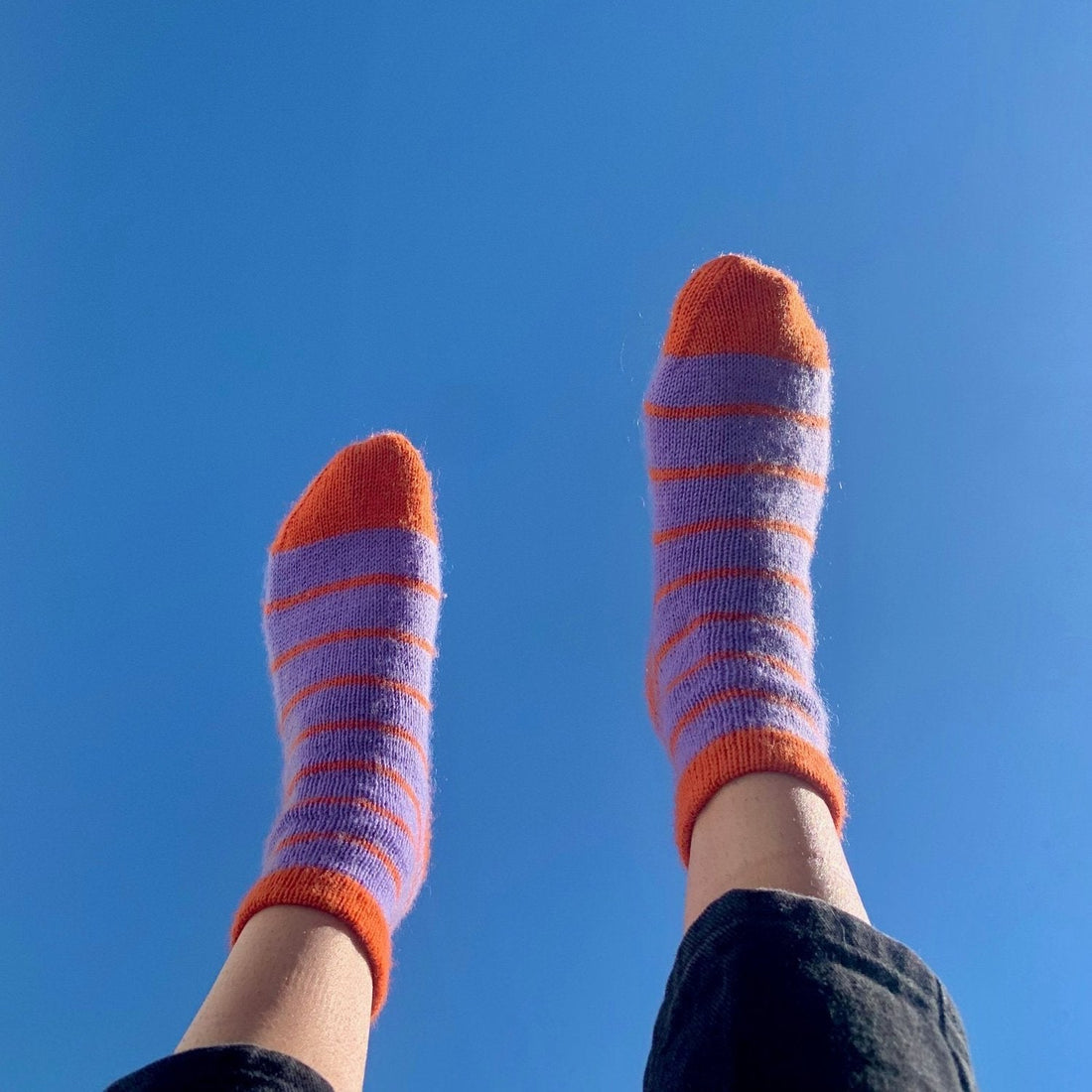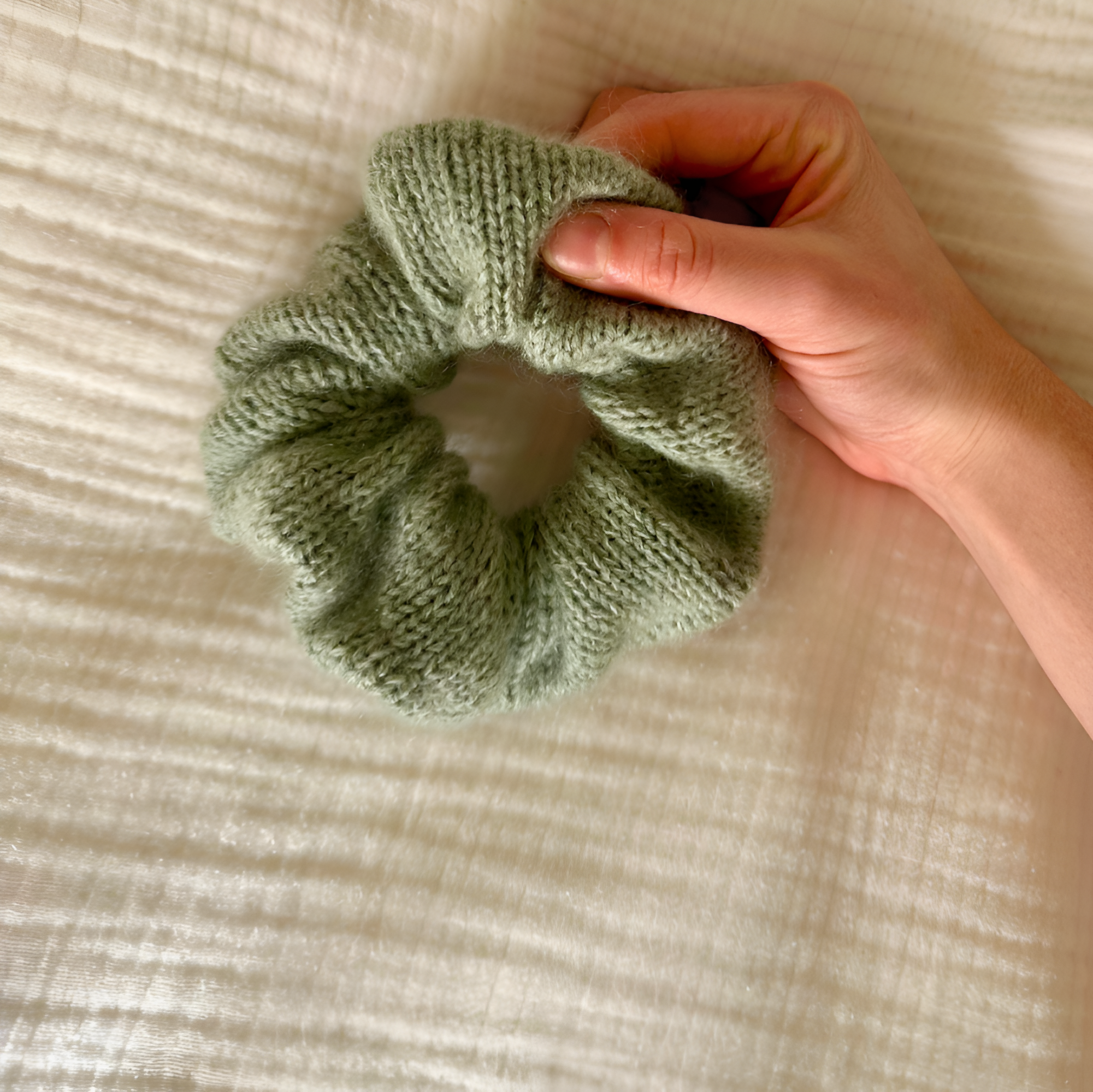Knitting can be such an incredibly calming and peaceful practice but can become quickly frustrating when you drop a stitch (or worse, when you drop a stitch and don’t notice it until hours of knitting later). When dropped stitches occur and go unfixed, that beautiful skirt, sock, or sweater you’ve been working so hard on can become awkward and crooked. To help avoid this, here are some tips on how to prevent and fix dropped stitches. By applying some simple practices, using the right tools, and knowing some fixing strategies, this guide will help you confidently knit with fewer dropped stitches!

Please note that this post includes affiliate links. If you make a purchase after clicking one of those links, I earn some yarn money at no extra cost to you!
Tips for Avoiding Dropped Stitches
Dropped stitches can ruin the look of any knitted item and can be frustrating and sometimes difficult to fix. However, these three simple tips will help you avoid dropping stitches as you knit up your work.
When knitting, I recommend avoiding “speed knitting” or trying to knit too quickly. Knitting at a steady pace causes fewer mistakes and creates a more even tension.
Paying attention to your work as you knit will prevent you from dropping stitches and allow you to spot any dropped stitches sooner rather than later.
Additionally, using the correct needle size for the yarn you are using will help decrease the number of stitches dropped while also keeping your tension more even. For instance, if you’re knitting with needles that are too small for the yarn you are working with, the yarn may easily slip off the needles. If you’re working with needles too large for the yarn, it can feel like a fight to knit each stitch, and can result in dropped stitches.
Common Tools Used to Prevent Dropped Stitches
While following those simple tips above can help decrease the amount of stitches you drop, you can prevent further dropped stitches with nifty knitting tools and notions!
My favorite tool to prevent dropped stitches is a needlepoint protector. Some come as small plastic caps that fit over the tips of the needles, but my go-to type of needlepoint protectors are these tip ties. All you have to do is place the silicone tubes on the ends of your needles, and boom! You no longer have to worry about stitches sliding off while your project is stuffed away in a bag or getting jostled around the couch when you’re not knitting. These tip ties are also especially handy if you are working with straight needles so you don’t lose your loose needle!
Cable locks are another useful tool to use when trying to prevent dropped stitches. Cable locks can be attached to your circular needle cords. They are another way to prevent stitches from falling off your needles when you’re not actively knitting. They are also handy if you are using interchangeable needles but need to use your needle points for another project. Placing the locks on the cables keeps your knitting in place, freeing up your needle points.
Utilizing knitting extension cords is one more great way to help reduce the risk of dropped stitches. These cords are made of a soft silicone and fit tightly onto the ends of your needles. These cords are helpful to have on hand for when you are trying on your works-in-progress (WIP). Knitters often place their stitches on scrap yarn or carefully try on their WIP while its on their needles. However, both methods can be awkward and result in dropped stitches. Instead, use knit extension cords! They literally act like an extension to your knitting needles, and stitches slide easily on and off as needed. They also have other uses, such as if you need to lay your project flat while working on it to get some cute pictures or measure your gauge.
How to Fix Dropped Stitches
For when you do inevitably drop a stitch or two, I recommend two tools to have at the ready in your project bag.
The first tool is likely one you already have: a clip stitch marker. Placed on the dropped stitch, the clip stitch marker holds the dropped stitch in place to prevent it from dropping any further down while you work your way toward fixing it. The marker also indicates which stitches have been dropped, allowing you to easily see where the mistakes are as you work your way toward it. Once found, you can use a duo repair hook to pull the stitch up so it can be knitted again.
Tinking is another method used to fix dropped stitches, and is essentially un-knitting your already knitted stitches. This method involves unraveling the stitches back until you fix the dropped stitch, and then having to reknit everything. Tinking is a bit more difficult and time consuming than using a repair hook and stitch markers, but it is a great technique for fixing large sections of dropped stitches.
Have a dropped stitch that is rows and rows down that can’t be fixed with a duo repair hook and would take too long to tink? You can put in a lifeline right below the dropped stitch section, frog your work to that point, and then reknit.
With these tips and tools to prevent and fix dropped stitches, you can now protect your hard work from mistakes and create items that you are proud to wear and share. Comment below if you found this helpful, if you have any questions, or if you have tips of your own you’d like to share!










